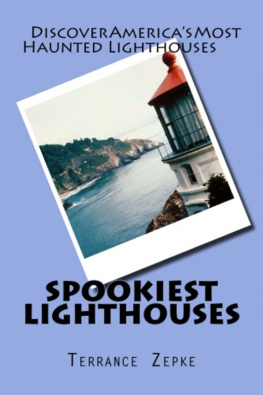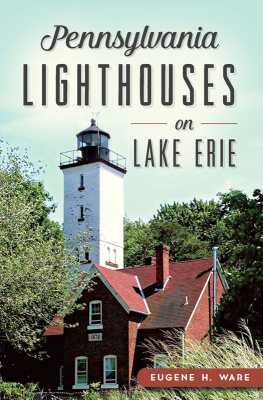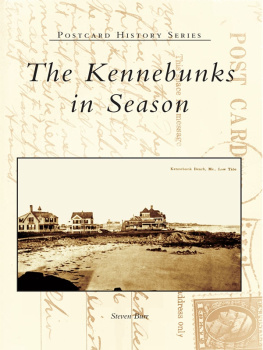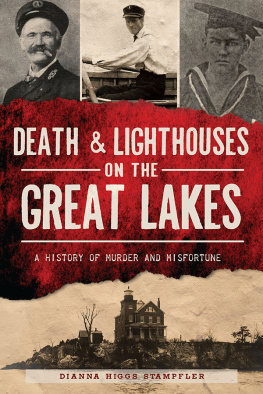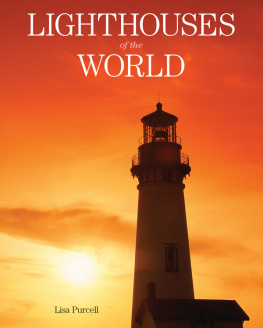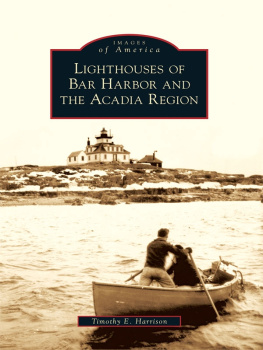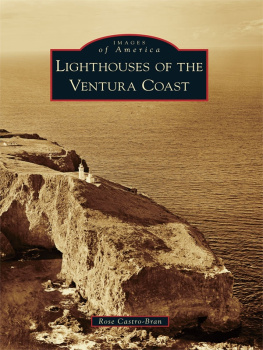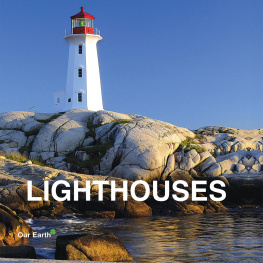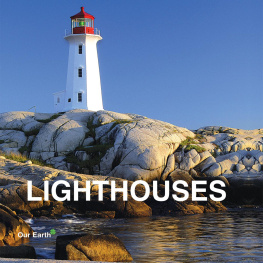



The latest edition of this work has been brought to publication with the generous assistance of Marguerite and Gerry Lenfest.
Naval Institute Press
291 Wood Road
Annapolis, MD 21402
1997 by Dennis L. Noble
All rights reserved. No part of this book may be reproduced or utilized in any form or by any means, electronic or mechanical, including photocopying and recording, or by any information storage and retrieval system, without permission in writing from the publisher.
First Naval Institute Press paperback edition published 2004
ISBN 978-1-6125-1345-4 (eBook)
The Library of Congress has cataloged the hardcover edition as follows:
Noble, Dennis. L.
Lighthouses and keepers: the U.S. Lighthouse Service and its legacy / Dennis L. Noble.
p. cm.
Includes bibliographical references and index.
1. Lighthouses--United States--History. I. Title.
VK1023.N63 1997
387.1550973--dc21
97-20882

 Print editions meet the requirements of ANSI/NISO z39.48-1992 (Permanence of Paper).
Print editions meet the requirements of ANSI/NISO z39.48-1992 (Permanence of Paper).
9 8 7 6 5 4 3 2
All photographs courtesy of the U.S. Coast Guard unless indicated otherwise.
Maps by Susan Browning
Frontspiece: The original Dry Tortugas light became a part of old Fort Jefferson, the prison where Dr. Samuel Mudd, unjustly convicted of involvement in the assassination of President Abraham Lincoln, was sent. In 1855, a new brick tower was built off Loggerhead Key, and the light was moved to that location.
This book is for
Stacy N. Rose
A. J. Joey Rose III
Allie S. Noble
Joseph P. Noble
and
Kyle M. Ritten
Sometimes I think the time is not far distant when I shall climb these lighthouse stairs no more. It has always seemed to me that the light was part of myself.... Many nights I have watched the lights my part of the night, and then could not sleep the rest of the night, thinking nervously what might happen should the light go out.... I wonder if the care of the lighthouse will follow my soul after it has left this worn out body!
Abbie Burgess
CONTENTS


T HE MODERN U.S. COAST GUARD is the result of the merger of five small federal maritime organizations. The oldest of the five, the U.S. Lighthouse Service, is the one with which most Americans have an enduring fascination: one writer even suggests that lighthouses are Americas answer to the castles of Europe. A Montana cowboy may not be able to tell the difference between a destroyer and a cruiser, but he more than likely can identify a lighthouse. Why this allure? Perhaps because lighthouses represent a symbol of steady permanence and a guiding light to a safe haven. Indeed, some organizations use lighthouses in their logos for just these reasons. The light stations may also represent the pleasant times many families have spent by the seaside or their idyllic and romantic dreams about the sea.
Whatever the reason for their captivation, lighthouse admirers owe a debt of gratitude to the U.S. Lighthouse Board. This group entered the picture in 1852, and the condition of lighthouses, lightships, and buoysat best, of poor qualitybegan to improve. Eventually, this country became a leader in the field of aids to navigation through their efforts.
Throughout its long history, the system of such aids went by many names. To prevent confusion, I will refer to the organization of aids to navigation as the U.S. Lighthouse Service, which is better known than such other official titles as the U.S. Light-House Establishment or Bureau of Lighthouses. I will also use the term light station instead of lighthouse when discussing an individual unit, as that is the term the service used. (Please see the glossary for a further explanation of this subject.)
While the number of books about lighthouses seems to grow each year, most publications concentrate only on a single lighthouse or lighthouses within a geographic region; others are photographic essays. Most of the works do not show the changes in aids to navigation brought about by technology, and, even more important, they do not treat lighthouses as a part of one of this nations oldest federal maritime organizations. Only two books, George R. Putnams Lighthouses and Lightships of the United States (1913) and F. Ross Holland, Jr.s Americas Lighthouses: Their Illustrated History (1972 and subsequent editions), have attempted to put lighthouses in organizational perspective and to discuss technology. Holland points out that the majority of authors fail to use archival sources in their books; even Putnams excellent book does not document sources. Historians wishing to delve into the National Archives holdings, however, will be disappointed to discover that a large number of the documents were destroyed by fire, thus creating gaps in the official record.
A detailed history of the U.S. Lighthouse Service as suggested by Holland would be a massive tome. The work would have to include lighthouses, lightships, fog signals, buoys and buoy tenders, plus a study of the people who served in the U.S. Lighthouse Service. Each of the above aspects of aids to navigation should be the subject of a scholarly monograph. In addition, a history of the architecture of lighthouses is much needed. If all these studies were put into one volume, it would be unmanageable.
This book, therefore, is a one-volume overview, or synthesis: it briefly examines most of the aspects of the service, except architecture and river lights, from 1789 to 1939. It is meant to update Hollands and Putnams works because of the recent appearance of a number of studies on the people who served at the lights, especially women. Holland and earlier writers also did not have access to such publications as The Keepers Log of the U.S. Lighthouse Society, which provides a great deal of information on lighthouses and other aids to navigation. Furthermore, Holland did not cover buoy tenders.
Next page

